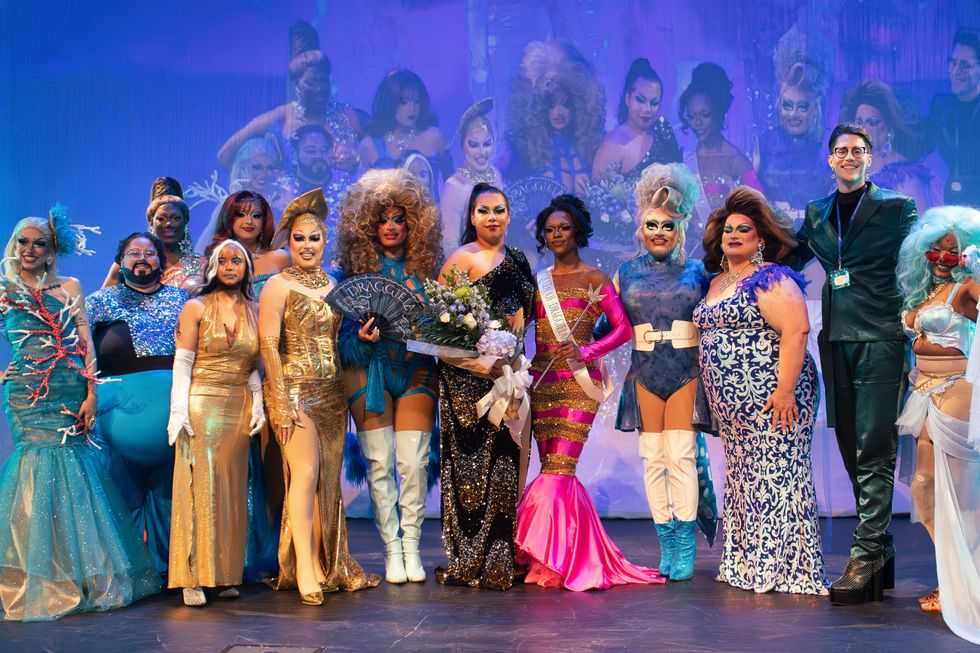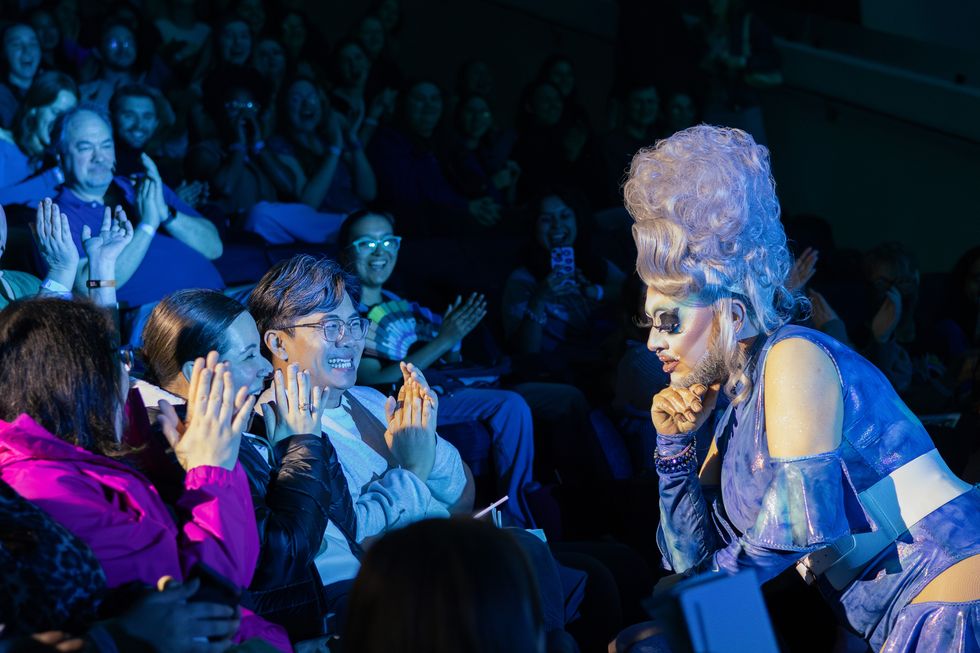It was no secret that Steve Park was adopted. He couldn’t remember a time when he didn’t know the whole story, which started in 1946 when his adopted parents took him in. Merril and Arthur Park—a big-time Hollywood agent who at one time repped Ronald Reagan—raised him in Brentwood; his sister was presented at cotillion. “It was a formal household,” he recalls. “You had to be properly dressed to go to dinner.” Park’s mother had always told him and his sister, “You kids don’t know how lucky how you were, you were hand-picked.” He liked to imagine someone going to the grocery store and squeezing the melons, choosing just the right ones.
Park had long operated under the assumption that he’d lived a decent life—a great one, really—and though he was curious at times, he’d never exactly felt a burning desire to track down his birth family. That is, until his best friend and fellow church organist Alice Rucker caught the genealogy bug. While drafting up her family tree, she started pestering him to send in a DNA test so he could figure out his lineage. After all, there were at least a few mysteries about his genes in need of unraveling, including that at age 70, he easily passed for 50.
[quote position="left" is_quote="true"]In those days, you just didn’t get pregnant out of wedlock.[/quote]
“Even though Rucker was pushing me, I sort of had made up my mind that I was never going to find anyone,” he says. “I really didn’t care.” His adopted parents were his family, and he felt that if his birth parents wanted him to know about them, they’d have made themselves available. And digging into potentially sealed adoption records, which vary state to state, didn’t seem worth it.
But after his adopted mother passed away in 2015, Rucker handed him a DNA test from 23andMe. Park immediately tossed it in a drawer, but after a few months, she finally wore him down: He swabbed his cheek and mailed off the sample. Yet when the results arrived, they didn’t reveal a single close relative. So he dropped it.
Rucker didn’t, though. She bought him another test—a test tube he was supposed to fill with saliva and send to AncestryDNA. He followed through this time, and it paid off. AncestryDNA had unconvered some potential relative matches and sent him a list of names. Rucker took on the case, hunting down contact information and emailing until she reached a matched woman in Indiana and another in Carlsbad, California.
After months of back and forth, the women—Marylou Chilton, 72, and her elderly mother Margaret Wood, then 90—agreed to meet up with Park and Rucker in a neutral space last fall. When the two friends pulled into the parking lot of a fish restaurant in Carlsbad, California, Park spotted his missing family members immediately, rushing across the parking lot and into his birth mother’s arms before even introducing himself.
Over a lunch that lasted nearly four hours, the story came tumbling out. Steve’s birth mother, Margaret, married young in 1944, had a baby, and became a war widow—all before the age of 20. After her high school sweetheart returned from the war, they reconnected and she got pregnant again, and when the pregnancy started to show, her parents shipped her off to an aunt in Riverside, California. “In those days, you just didn’t get pregnant out of wedlock,” explains Park.
[quote position="right" is_quote="true"]It’s so strange, but we talk the same. Mostly just laughing.[/quote]
As a single parent of a 2-year-old daughter and without a job in a strange city, Margaret had few options other than adoption. She told him that just before giving birth, her nurse told her, “The best thing to do is to not even see your son.”
Margaret never stopped wondering what happened to that little baby. And now she got to see the baby she said goodbye to in the hospital. Steve finally learned why people assume he’s 20 years younger than his age. “It’s from my mother; she is sharp as a tack, and she is the designated driver for all her friends.”
At the restaurant table, Rucker pulled up the genealogical tree she’d built for Steve. He got up to see it, leaning in between his half sister and his mother, and watched a tear slip down Margaret’s cheek. After the meeting, the two kept in touch over email. They weren’t sure what to call each other, but settled on “BM” for birth mother, and “BS” for birth son.
CeCe Moore, a professional musician turned genetic genealogist, hears stories like Park’s all the time. Moore was always interested in biology, and when autosomal DNA tests started becoming popular in 2009, she convinced 40 members of her family to take them and started writing a blog about what they found.
That experience drove her to create DNA Detectives, an Orange County-based company, in 2010. She has consulted on cases like Benjamin Kyle’s, an amnesiac found slumped over at a Burger King in Georgia. She also has worked pro bono to help adoptees find their relatives. These days, the demand is too great, so she started a Facebook group where people help each other solve personal genetic mysteries. That group now has more than 46,000 members—and it’s where Rucker started hunting for clues to Steve’s parentage.
Moore says it isn’t exactly rocket science. Three different companies (23andMe, AncestryDNA, and Family Tree DNA) offer DNA tests, each costing about $100. Many users prefer to keep their tests private, perhaps because they’re taking a paternity test that may have sensitive results, or maybe did it on a lark. But for those who want to really explore into their family history, adding tests to the public database can lead to new information.
It’s possible to really game the system by taking multiple tests, connecting their various genetic databases to a wide net of potential links. Ancestry.com’s database alone holds information about 3 million people, which means most users will be able to find some sort of relative, says Moore. Even distant relatives aren’t impossible to find: Second cousins share 3 percent of their DNA (which is sampled by testing companies at more than 700,000 locations along a genome). When you connect a genetic profile to the name of a person (sometimes with contact information attached) who has a really fleshed-out tree—perhaps because they have a well-intentioned nagging presence in their life, not unlike Rucker—it can be easier to fill in your own tree, Moore says.
Sometimes the results can really shake up a family’s perception. Studies show that around 10 percent of people have a biological father who is not the one who raised them. But when people who’ve already fleshed out their genealogical tree (down to their second cousin twice removed) take genetic tests, it can help everyone. “I think in the next two to three years, the vast majority of adoptees will be able to test and get immediate answers,” she says. “A lot of long-standing mysteries will be answered.”
[quote position="full" is_quote="true"]I think in the next two to three years, the vast majority of adoptees will be able to test and get immediate answers.[/quote]
Mary Becker Cunningham, 56, Attica, New York had one of those mysteries. Like Park, she was adopted, but didn’t necessarily want to track any family members down. But she did want to discover her heritage. So she took a genetic test from AncestryDNA.
She received the results last Thanksgiving night, and she burst into tears when she saw that she had matched as a first cousin with someone in the system. “After that, I don’t think I left the house for a couple weeks,” she says. She wrote to everyone she could find on the list of potential relatives, telling them who she was.
She saw CeCe Moore talking about genetic genealogy on television and joined the DNA Detectives Facebook group, where she got advice on how to draw up potential family trees and test their validity. With the help of the group, Cunningham narrowed down her potential relatives and discovered a first cousin. That cousin reached out to another woman, Cunningham’s older half sister. She sent Cunningham a text that read, “We always knew about you and we have looked for you our entire life.”
The next day she hopped on a conference call with her birth mother, who had conceived Cunningham while working as a nanny for a man who ran a trucking business (Cunningham says she doesn’t know if her birth father ever knew about her), and one of her half sisters. After putting Cunningham up for adoption, her mother moved out of New York and down to Florida.
In a striking coincidence, Cunningham’s birth mother now lives just 10 miles away from Cunningham’s daughter in Florida. She drove to Florida last month and met her birth mother and two half-sisters in person. “It’s so strange, but we talk the same,” says Cunningham, who adds that it feels like they’ve known each other their whole lives. “I did a lot of crying before and after, but when we were talking, we were mostly just laughing. I love them, and they love me.”
Park experienced a similar emotion when he got into the car after that long lunch in Carlsbad. It was evening by the time he turned to Rucker and said with a big sigh, “My life is now complete. It really was. Like, wow, I now know where I came from.”
















 Let us all bow before Gary, the Internet's most adventurous feline. Photo credit: James Eastham
Let us all bow before Gary, the Internet's most adventurous feline. Photo credit: James Eastham Gary the Cat enjoys some paddling. Photo credit: James Eastham
Gary the Cat enjoys some paddling. Photo credit: James Eastham James and Gary chat with Ryan Reed and Tony Photo credit: Ryan Reed
James and Gary chat with Ryan Reed and Tony Photo credit: Ryan Reed

 Rock deterioration has damaged some of the inscriptions, but they remain visible. Renan Rodrigues Chandu and Pedro Arcanjo José Feitosa, and the Casa Grande boys
Rock deterioration has damaged some of the inscriptions, but they remain visible. Renan Rodrigues Chandu and Pedro Arcanjo José Feitosa, and the Casa Grande boys The Serrote do Letreiro site continues to provide rich insights into ancient life.
The Serrote do Letreiro site continues to provide rich insights into ancient life.

 The contestants and hosts of Draggieland 2025Faith Cooper
The contestants and hosts of Draggieland 2025Faith Cooper Dulce Gabbana performs at Draggieland 2025.Faith Cooper
Dulce Gabbana performs at Draggieland 2025.Faith Cooper Melaka Mystika, guest host of Texas A&M's Draggieland, entertains the crowd
Faith Cooper
Melaka Mystika, guest host of Texas A&M's Draggieland, entertains the crowd
Faith Cooper


